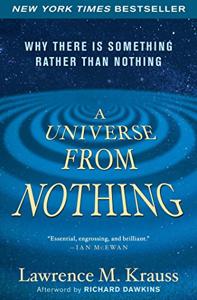
Want to learn the ideas in A Universe From Nothing better than ever? Read the world’s #1 book summary of A Universe From Nothing by Lawrence M. Krauss here.
Read a brief 1-Page Summary or watch video summaries curated by our expert team. Note: this book guide is not affiliated with or endorsed by the publisher or author, and we always encourage you to purchase and read the full book.
Video Summaries of A Universe From Nothing
We’ve scoured the Internet for the very best videos on A Universe From Nothing, from high-quality videos summaries to interviews or commentary by Lawrence M. Krauss.
1-Page Summary of A Universe From Nothing
Overview
Newton’s theory of gravity was sufficient to explain the motion of objects in our universe for a long time. However, as scientists started examining large and distant objects, they found that Newtonian physics could not explain their behavior. So Einstein developed his own theories of special and general relativity to better understand the universe we live in.
Relativity is Einstein’s theory about the structure of spacetime. It established that time and space are not separate entities, but are interlinked so that how fast an object moves affects how quickly time passes. The theory also postulates that nothing can travel faster than light speed.
Relativity demonstrated that matter and energy can be converted from one to another. Matter can turn into energy, as described by the famous equation E=mc2.
General relativity is Einstein’s theory of gravitation, which showed that heavy objects distort spacetime in a similar way to how a marble distorts thin rubber sheeting when it’s laid on top of it. The larger the object, the more it bends around it (the rubber or space) and pulls in surrounding objects.
When light travels near massive objects, they bend the light around them. Astronomers use this phenomenon to study stars and galaxies behind black holes.





